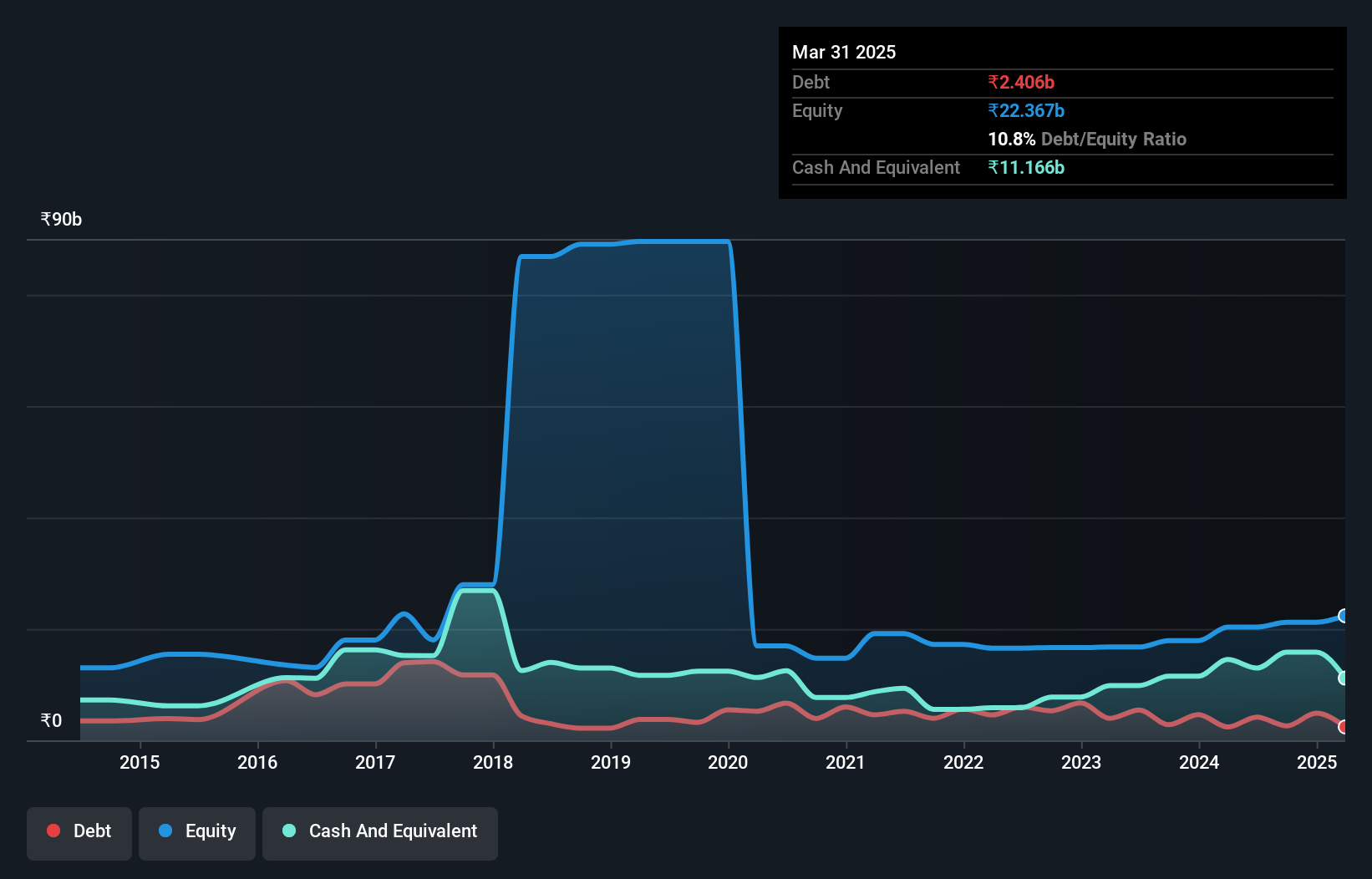
The external fund manager backed by Berkshire Hathaway's Charlie Munger, Li Lu, makes no bones about it when he says 'The biggest investment risk is not the volatility of prices, but whether you will suffer a permanent loss of capital.' It's only natural to consider a company's balance sheet when you examine how risky it is, since debt is often involved when a business collapses. We can see that Thomas Cook (India) Limited (NSE:THOMASCOOK) does use debt in its business. But the more important question is: how much risk is that debt creating?
When Is Debt A Problem?
Debt is a tool to help businesses grow, but if a business is incapable of paying off its lenders, then it exists at their mercy. Part and parcel of capitalism is the process of 'creative destruction' where failed businesses are mercilessly liquidated by their bankers. However, a more usual (but still expensive) situation is where a company must dilute shareholders at a cheap share price simply to get debt under control. Of course, the upside of debt is that it often represents cheap capital, especially when it replaces dilution in a company with the ability to reinvest at high rates of return. When we examine debt levels, we first consider both cash and debt levels, together.
How Much Debt Does Thomas Cook (India) Carry?
The chart below, which you can click on for greater detail, shows that Thomas Cook (India) had ₹2.41b in debt in March 2025; about the same as the year before. However, its balance sheet shows it holds ₹11.2b in cash, so it actually has ₹8.76b net cash.

How Strong Is Thomas Cook (India)'s Balance Sheet?
The latest balance sheet data shows that Thomas Cook (India) had liabilities of ₹38.9b due within a year, and liabilities of ₹9.87b falling due after that. Offsetting this, it had ₹11.2b in cash and ₹6.32b in receivables that were due within 12 months. So it has liabilities totalling ₹31.3b more than its cash and near-term receivables, combined.
This deficit isn't so bad because Thomas Cook (India) is worth ₹75.1b, and thus could probably raise enough capital to shore up its balance sheet, if the need arose. But we definitely want to keep our eyes open to indications that its debt is bringing too much risk. Despite its noteworthy liabilities, Thomas Cook (India) boasts net cash, so it's fair to say it does not have a heavy debt load!
Check out our latest analysis for Thomas Cook (India)
Notably Thomas Cook (India)'s EBIT was pretty flat over the last year. We would prefer to see some earnings growth, because that always helps diminish debt. The balance sheet is clearly the area to focus on when you are analysing debt. But ultimately the future profitability of the business will decide if Thomas Cook (India) can strengthen its balance sheet over time. So if you want to see what the professionals think, you might find this free report on analyst profit forecasts to be interesting.
Finally, a company can only pay off debt with cold hard cash, not accounting profits. While Thomas Cook (India) has net cash on its balance sheet, it's still worth taking a look at its ability to convert earnings before interest and tax (EBIT) to free cash flow, to help us understand how quickly it is building (or eroding) that cash balance. Over the last three years, Thomas Cook (India) actually produced more free cash flow than EBIT. That sort of strong cash conversion gets us as excited as the crowd when the beat drops at a Daft Punk concert.
Summing Up
Although Thomas Cook (India)'s balance sheet isn't particularly strong, due to the total liabilities, it is clearly positive to see that it has net cash of ₹8.76b. The cherry on top was that in converted 244% of that EBIT to free cash flow, bringing in ₹6.0b. So we don't have any problem with Thomas Cook (India)'s use of debt. The balance sheet is clearly the area to focus on when you are analysing debt. However, not all investment risk resides within the balance sheet - far from it. For example - Thomas Cook (India) has 2 warning signs we think you should be aware of.
Of course, if you're the type of investor who prefers buying stocks without the burden of debt, then don't hesitate to discover our exclusive list of net cash growth stocks, today.
Valuation is complex, but we're here to simplify it.
Discover if Thomas Cook (India) might be undervalued or overvalued with our detailed analysis, featuring fair value estimates, potential risks, dividends, insider trades, and its financial condition.
Access Free AnalysisHave feedback on this article? Concerned about the content? Get in touch with us directly. Alternatively, email editorial-team (at) simplywallst.com.
This article by Simply Wall St is general in nature. We provide commentary based on historical data and analyst forecasts only using an unbiased methodology and our articles are not intended to be financial advice. It does not constitute a recommendation to buy or sell any stock, and does not take account of your objectives, or your financial situation. We aim to bring you long-term focused analysis driven by fundamental data. Note that our analysis may not factor in the latest price-sensitive company announcements or qualitative material. Simply Wall St has no position in any stocks mentioned.
About NSEI:THOMASCOOK
Thomas Cook (India)
Offers integrated travel services in India and internationally.
Excellent balance sheet and fair value.
Similar Companies
Market Insights
Community Narratives


